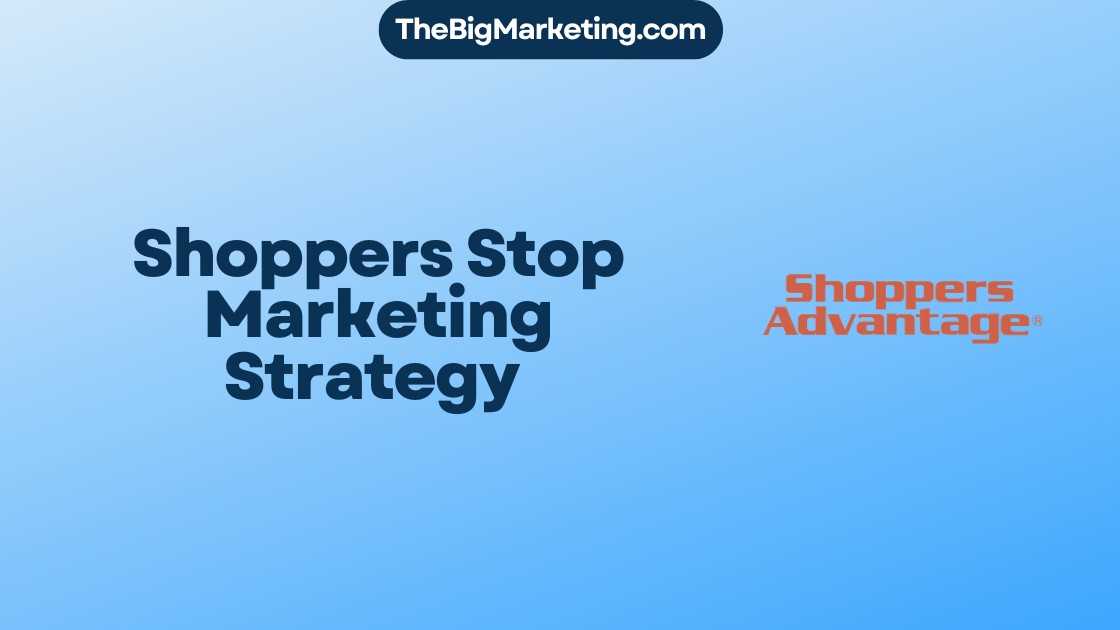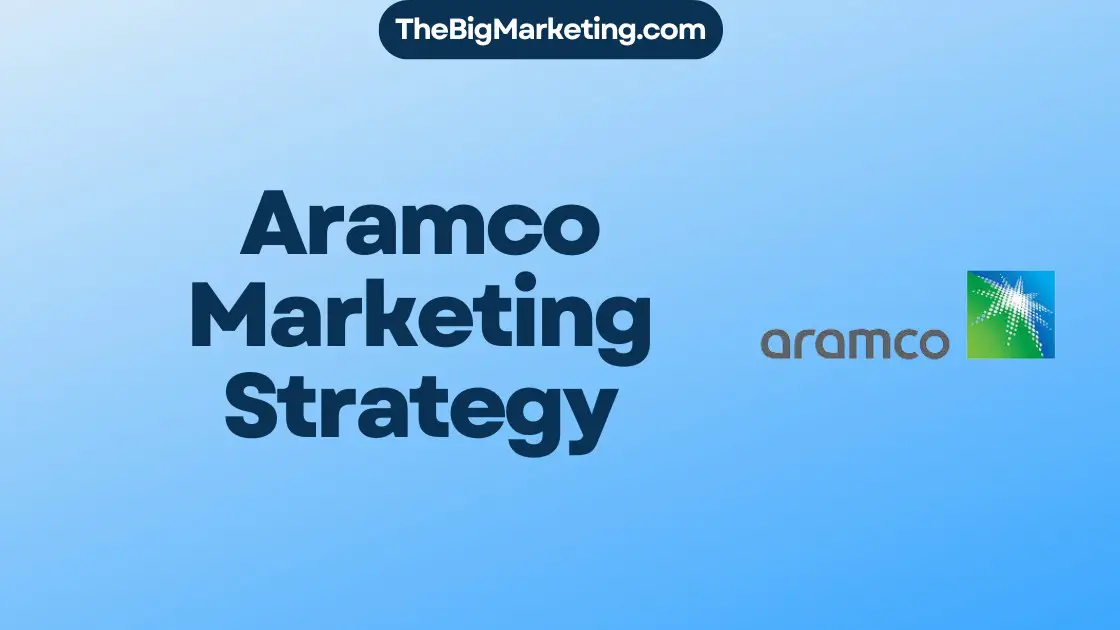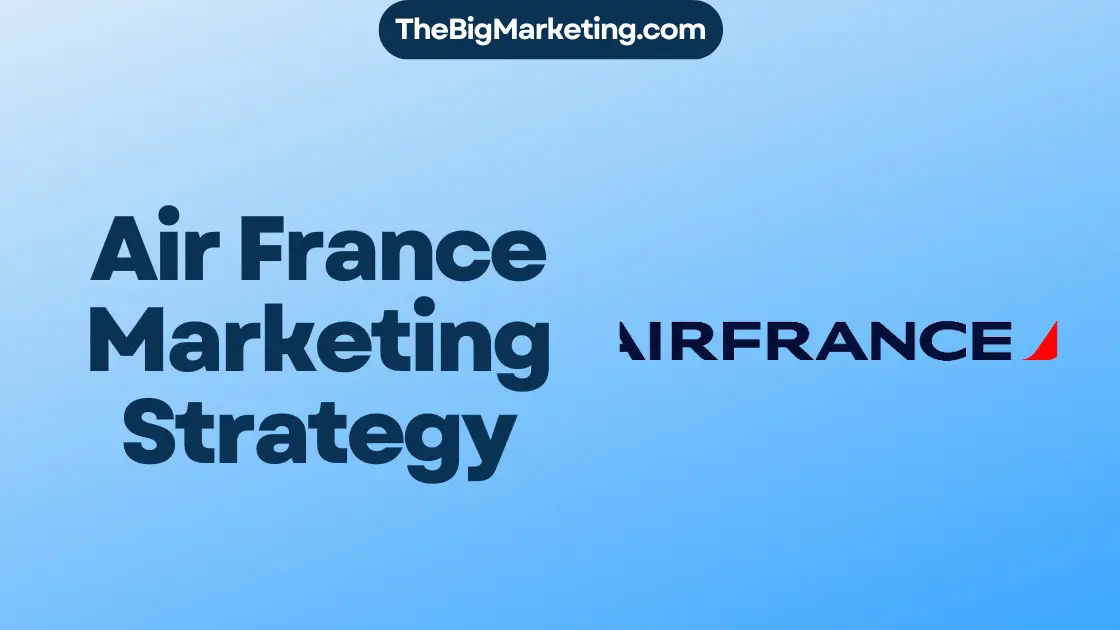The year 2024 brings exciting opportunities for B2B SAAS marketing. As the industry continues to evolve, it is crucial for SAAS companies to stay ahead of the competition by implementing effective marketing strategies. This guide will provide you with a comprehensive overview of the key elements to consider when developing your B2B SAAS marketing strategy.
One of the primary goals of any marketing strategy is lead generation. In this guide, you will learn how to attract and engage potential customers, nurturing them through the marketing funnel to convert them into paying customers. Additionally, we will explore the importance of SEO optimization and customer retention strategies to ensure long-term success.
Setting clear goals is essential for any marketing campaign. In this guide, we will show you how to establish SMART goals for your B2B SAAS marketing strategy. By setting specific, measurable, achievable, relevant, and time-bound goals, you will be able to track your progress and make data-driven decisions to drive your business forward.
Finding the right audience is crucial for the success of your B2B SAAS marketing strategy. We will discuss how to identify your target group and tailor your messaging and marketing efforts to resonate with your ideal customers. By understanding their pain points and providing unique value, you can differentiate yourself from the competition.
Standing out in a crowded market is essential for B2B SAAS companies. We will explore strategies to position your brand as a thought leader and showcase your expertise. Through effective storytelling and unique selling propositions, you can build trust and credibility among your target audience.
Key Takeaways:
- Lead generation is a key focus in B2B SAAS marketing strategies in 2024.
- Setting SMART goals helps track progress and drive success.
- Identifying and targeting the right audience is essential.
- Standing out from the competition requires unique value propositions and thought leadership.
- Customer retention strategies play a vital role in long-term success.
Establishing Your Goals and Target Group
In order to create an effective B2B SAAS marketing strategy, it is essential to establish clear goals and identify your target audience. By taking the time to thoroughly research and define these key elements, you can ensure that your marketing efforts are focused and impactful.
Setting SMART Goals
SMART goals are specific, measurable, attainable, relevant, and time-bound. These goals provide a framework for your marketing campaign and enable you to track progress and measure success. Begin by understanding the services your SAAS company offers and identify the goals you want to achieve through your marketing efforts.
- Specific: Be clear and precise about what you want to accomplish. For example, “Increase lead generation by 20% within six months.”
- Measurable: Quantify your goals so that you can determine whether or not they have been achieved. Use metrics such as website traffic, conversion rates, or revenue generated.
- Attainable: Ensure that your goals are realistic and within reach. Consider your available resources, capabilities, and industry trends when setting your goals.
- Relevant: Align your goals with the overall objectives of your organization. Your marketing goals should contribute to the growth and success of your SAAS company.
- Time-bound: Set specific deadlines for each goal to create a sense of urgency and accountability.
Identifying Your Target Group
Understanding your target audience is essential to tailor your marketing messages and effectively reach potential customers. Take the time to gather market information and analyze your customer demographics, behaviors, and preferences.
| Factors to Consider | Examples |
|---|---|
| Industry | Technology, healthcare, finance |
| Company Size | Startups, small businesses, enterprise-level organizations |
| Job Titles | CEOs, CTOs, marketing managers |
| Challenges and Pain Points | Lack of scalability, outdated technology, high customer acquisition costs |
By gaining insights into your target audience, you can create targeted and compelling marketing messages that resonate with their specific needs and pain points.
Ultimately, establishing clear goals and defining your target audience will lay the foundation for a successful B2B SAAS marketing strategy. By aligning your efforts with your goals and catering to the needs of your target group, you can maximize the impact of your marketing campaign and drive meaningful results.
Defining Your SAAS B2B Offer
When it comes to a successful SAAS B2B marketing strategy, defining your service offering is crucial. By understanding the value your product brings to the table, identifying the problems it solves, and highlighting the unique selling proposition (USP), you can position your SAAS company for success.
Start by thoroughly evaluating your service offerings and the benefits they provide to your target audience. Consider the pain points your product addresses and how it solves specific problems. This knowledge will help you create targeted marketing messages that resonate with potential customers and differentiate you from competitors.
Adding value to the industry should be a priority. Evaluate the additional features and functionalities your product offers that go beyond the basic requirements. These value-added elements can become your USP and give you a competitive edge.
Remember to consider factors like user experience, scalability, and integration capabilities. A user-friendly interface, seamless scalability, and the ability to integrate with other software solutions are all elements that can make your SAAS B2B offer more appealing to potential customers.
| Factors to Consider in Defining Your SAAS B2B Offer |
|---|
| Customer pain points |
| Unique selling proposition (USP) |
| Additional value-added features |
| User experience |
| Scalability |
| Integration capabilities |
By defining your SAAS B2B offer with a clear understanding of the service offering, problems solved, value-added components, and your unique selling proposition, you can effectively communicate the benefits of your product to your target audience and stand out in the market.
Making a Clear Conversion Plan
Implementing a solid conversion plan is essential for maximizing the effectiveness of your B2B SAAS marketing strategy. By focusing on website design, conducting a technical SEO audit, creating gated content, and aligning marketing strategies with the conversion path, you can optimize your efforts and drive more qualified leads.
Website Design: A User-Friendly Experience
A well-designed website plays a crucial role in converting visitors into customers. A user-friendly interface, intuitive navigation, and visually appealing layout can enhance engagement and encourage users to take action.
Make sure your website incorporates:
- Clean and organized design
- Clear call-to-action buttons
- Responsive design for mobile users
- Fast loading speeds
Technical SEO Audit: Optimizing for Search Engines
A technical SEO audit is crucial for ensuring your website is search engine friendly and can be easily discovered by potential customers. By optimizing technical aspects such as site structure, meta tags, URLs, and page speed, you can improve your website’s visibility and organic search rankings.
Key areas to focus on during a technical SEO audit include:
- Optimizing meta tags and title tags
- Reducing page load times
- Optimizing URLs and site structure
- Fixing broken links and redirects
Gated Content: Generating Leads
Gated content refers to valuable resources that are offered to visitors in exchange for their contact information. By creating compelling gated content such as whitepapers, e-books, or webinars, you can attract potential customers and capture leads for your sales funnel.
Ensure your gated content provides:
- Relevant and valuable information
- Clear benefits for the reader
- Compelling call-to-action to download or access
Aligning Marketing Strategies with the Conversion Path: The Marketing Funnel
The marketing funnel is a framework that helps guide customers through the conversion process. By aligning your marketing strategies with each stage of the funnel, you can nurture leads and guide them towards making a purchase decision.
The marketing funnel consists of the following stages:
| Stage | Description |
|---|---|
| Awareness | Raising awareness and attracting potential customers |
| Consideration | Educating leads and nurturing their interest |
| Decision | Guiding leads towards making a purchase decision |
By mapping your marketing strategies to each stage of the funnel, you can provide relevant content and offers that resonate with your target audience.
Focusing on SEO
When it comes to marketing strategies for SAAS companies, SEO is a valuable and cost-effective approach. By optimizing keywords, creating valuable content, and implementing link building strategies, businesses can improve organic traffic and generate leads.
Keyword Optimization
Keyword optimization is a crucial aspect of SEO. By conducting thorough keyword research and incorporating relevant keywords throughout website content, blog posts, and meta tags, SAAS companies can enhance their visibility in search engine results. It’s important to choose keywords that align with the target audience’s search intent and have a good balance of search volume and competition.
Content Marketing
Content marketing plays a significant role in boosting SEO. By consistently publishing high-quality, informative, and engaging content, SAAS companies can attract organic traffic and establish themselves as industry thought leaders. This content can include blog posts, whitepapers, case studies, and informative guides that address the pain points and challenges of the target audience.
Link Building
Link building is another essential aspect of SEO for SAAS companies. By acquiring backlinks from reputable and relevant websites, businesses can improve their domain authority and increase their chances of ranking higher in search engine results. This can be achieved through strategies such as guest posting, influencer outreach, and creating valuable content that naturally attracts links from other websites.
Implementing these SEO strategies can lead to improved organic traffic, higher search engine rankings, and ultimately, more leads for SAAS companies. It’s important to consistently monitor and analyze the performance of these efforts to make data-driven optimizations and ensure long-term success.
| SEO Strategy | Benefits |
|---|---|
| Keyword Optimization | Improved visibility in search engine results, targeted traffic |
| Content Marketing | Established thought leadership, increased organic traffic |
| Link Building | Enhanced domain authority, higher search engine rankings |
Growth Loops
Growth loops are an essential component of a successful B2B SAAS marketing strategy. These self-compounding initiatives not only enhance user retention but also generate valuable customer referrals. By focusing on building a product or marketing strategy that encourages long-term usage and word-of-mouth recommendations, companies can create a sustainable loop of growth and profitability.
One of the key elements of growth loops is user retention. By prioritizing customer satisfaction and continuously improving their experience, SAAS companies can increase user loyalty and reduce churn. By retaining existing customers, companies can not only save on acquisition costs but also benefit from their potential to refer new clients.
Customer referrals, another crucial aspect of growth loops, can be a game-changer for B2B SAAS companies. Satisfied customers who willingly recommend a product to their peers contribute to a steady stream of qualified leads. These referrals hold significant value as they often come with built-in trust and credibility, making them more likely to convert into paying customers.
To implement effective growth loops, companies should focus on creating an exceptional user experience that keeps customers engaged and satisfied. By regularly seeking feedback, listening to customer needs, and addressing any pain points, companies can continuously improve their products and services, enticing users to remain loyal and advocate for the brand.
The Impact of Growth Loops on Business Success
Growth loops have a profound impact on business success in several ways:
- User Retention: By prioritizing user retention, companies can foster long-term relationships with customers, increasing customer lifetime value and maximizing revenue.
- Cost-effectiveness: Acquiring new customers can be costly. By relying on growth loops, companies can leverage the power of referrals to acquire new customers at a fraction of the cost.
- Brand Advocacy: When customers become advocates for the brand, they play a vital role in building brand awareness and credibility through positive word-of-mouth recommendations.
- Continuous Growth: Growth loops create a self-sustaining mechanism that drives continual growth, allowing companies to expand their customer base and increase market share.
Implementing growth loops requires a strategic and holistic approach. It involves understanding customer needs, delivering exceptional experiences, and consistently exceeding expectations. By doing so, companies can harness the power of growth loops to fuel their business growth and ultimately achieve long-term success.
Crafting Your Homepage and Website
Your homepage and website play a pivotal role in shaping potential customers’ perception of your brand. As the saying goes, “you never get a second chance to make a first impression.” This holds especially true in the digital realm, where your website serves as your virtual storefront, welcoming visitors and enticing them to explore further.
When it comes to website design, aesthetics matter. A visually appealing homepage can captivate visitors and set the stage for a positive user experience. Consider using high-quality images, engaging videos, and a clean, modern layout that reflects your brand’s identity and values.
Addressing Potential Customers’ Desires
Understanding your target audience is essential for crafting a homepage that resonates with their needs and desires. Conduct market research, analyze customer data, and identify their pain points. By addressing these challenges directly on your homepage, you can capture their attention and build trust by showcasing how your product or service can provide solutions.
For instance, a SAAS company offering project management software might highlight features that streamline team collaboration, boost productivity, and ensure timely project delivery. By demonstrating your understanding of potential customers’ needs and desires, you can establish credibility and position your brand as a trusted ally in their journey towards success.
Showcasing Your Product’s Value
A well-crafted homepage should clearly communicate the unique value proposition of your product. Highlight the benefits and advantages it offers, whether it’s time savings, cost reduction, increased efficiency, or improved customer satisfaction. Use concise and compelling messaging to convey the value that sets your product apart from competitors.
Visual elements such as product screenshots, demos, and customer testimonials can further reinforce the value proposition. Incorporate these elements strategically throughout your homepage to engage visitors and convince them that your product is worth exploring and investing in.
Establishing Trust and Credibility
Building trust is paramount when it comes to converting website visitors into customers. To instill confidence in your brand, consider incorporating trust signals on your homepage. These might include customer reviews, case studies, accolades, certifications, security badges, or partnerships with reputable organizations.
Additionally, ensure your website is user-friendly and intuitive, with easy navigation and clear calls to action. A cluttered or confusing website can be a major turnoff for visitors, potentially leading them to bounce off and seek alternatives.
| Key Elements of an effective Homepage | Website |
|---|---|
| Visually appealing design | ✓ |
| Addressing customer desires | ✓ |
| Showcasing product value | ✓ |
| Establishing trust and credibility | ✓ |
Your homepage and website design act as the virtual face of your business, making that crucial first impression. By carefully crafting an engaging, informative, and visually captivating homepage, you can attract visitors, captivate their attention, and entice them to explore your offerings.
Running a Special Offer
Looking to drive immediate results and captivate potential customers? Running a special offer can be the key to success. By creating a sense of urgency and offering exclusive deals, you can accelerate decision-making, boost conversions, and attract new customers.
Time-limited special offers, such as discounts or exclusive features, are effective ways to incentivize potential buyers and encourage them to take action. By setting a deadline, customers feel a heightened urgency to make a purchase, reducing the likelihood of procrastination or indecision.
When designing your special offer, consider targeting specific segments of your audience. By tailoring your promotion to different customer personas, you can create a more personalized and engaging experience. For example, you could offer a discount exclusively to new customers or provide a value-added bonus for existing customers.
To promote your special offer effectively, leverage multiple marketing channels. Craft persuasive email campaigns, create attention-grabbing social media posts, and optimize your website to prominently display the offer. Additionally, consider partnering with influencers or industry publications to amplify the reach of your promotion.
Remember, the success of a special offer depends on its perceived value and the urgency it creates. Ensure that the discount or feature provided is significant enough to entice customers to take action. Additionally, clearly communicate the limited availability and time frame of the offer to drive immediate action.
Example Special Offer Promotion
Let’s take a look at an example of how a B2B SAAS company can run a special offer:
Company: XYZ Analytics
| Offer | Discount | Duration |
|---|---|---|
| Advanced Analytics Package | 30% off | 7 days |
In this example, XYZ Analytics is offering a 30% discount on their Advanced Analytics Package for a limited time of 7 days. This special offer is targeted towards new customers who want to unlock advanced insights and drive data-based decision-making.
By creating a compelling offer with a clear discount and time frame, XYZ Analytics can attract new customers, increase conversions, and generate buzz within their target market.
Paid Search and Social Ads
To maximize your B2B SAAS marketing strategy, integrating paid search ads and paid social ads is crucial. These advertising methods provide targeted outreach and help you reach potential business clients effectively.
Paid search ads enable you to strategically target specific keywords that align with your SAAS offering. By bidding on relevant search terms, you can ensure your ads appear prominently in search engine results, increasing visibility and attracting qualified leads. This approach allows you to connect with potential customers who are actively searching for solutions in your industry.
Paid social ads offer a different avenue for reaching your target audience. Platforms like Facebook, LinkedIn, and Twitter provide highly targeted advertising options that allow you to segment your audience based on factors such as industry, job title, and company size. This level of precision ensures that your ads are displayed to decision-makers who are more likely to engage with your offering.
By combining paid search ads and paid social ads, you can maximize the reach of your B2B SAAS marketing campaign. These strategies complement each other and provide diverse opportunities for generating leads and acquiring new customers.
Conclusion
In conclusion, developing an effective B2B SAAS Marketing Strategy in 2024 requires a comprehensive approach that encompasses various elements. Thorough research and goal setting provide a solid foundation, while well-crafted offers and clear conversion plans ensure maximum impact. SEO optimization plays a vital role in driving organic traffic and generating leads.
Strategic initiatives such as growth loops and special offers enhance user retention and accelerate decision-making. Meanwhile, paid ads provide immediate visibility, allowing businesses to reach their target audience efficiently. A well-designed website and homepage leave a lasting impression on potential customers, establishing trust and credibility.
By implementing these strategies and considering the ever-evolving market landscape, B2B SAAS companies can position themselves for success in 2024 and beyond. By utilizing the power of research, innovation, and customer-centric marketing, businesses can stay ahead of the competition, attract new clients, and achieve their growth objectives.






